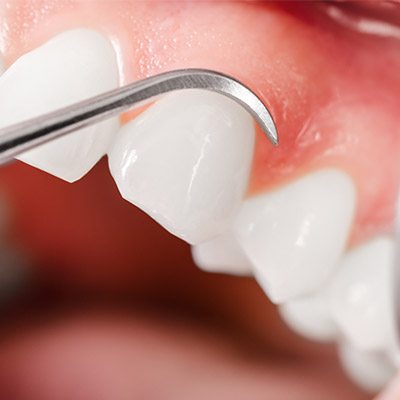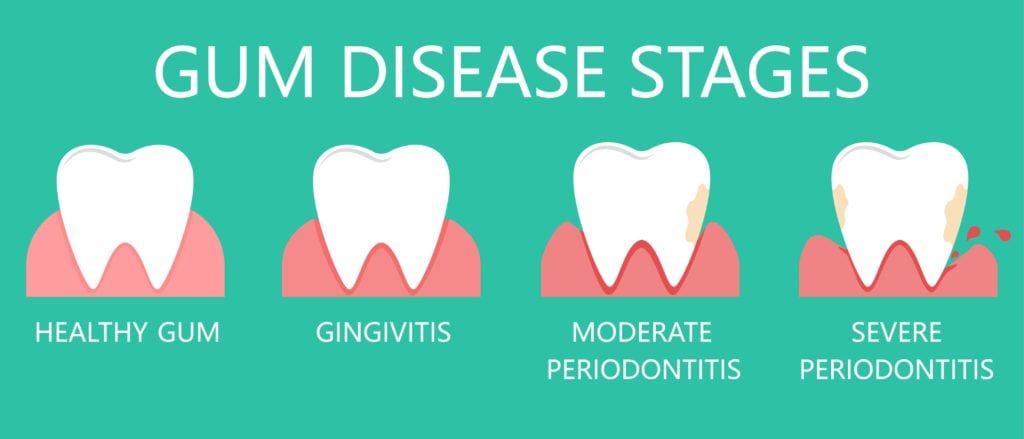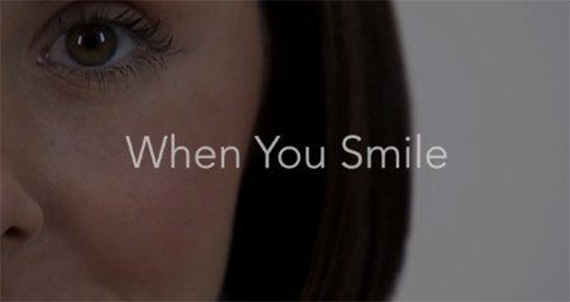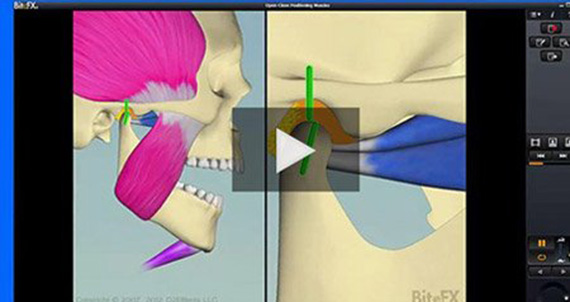The Top 4 Causes of Gum Recession
When you smile, do your teeth look alarmingly large? Do you feel a dull ache when drinking cold or hot beverages? Do you gums suddenly look “loose”? If you find yourself answering yes to any of these questions, then chances are you are affected by gum recession.

Gum recession is the process by which your gums begin to pull away from your teeth. This causes your teeth to appear larger than usual, exposes your tooth roots, and can contribute to tooth sensitivity. You may even notice a notch around the gum line which is the transition from the crown to the root. However, because gum recession occurs gradually, it may not be immediately noticeable.
Gum recession can occur for a number of reasons, but some causes are more common than others. Here are the top three causes of gum recession:
- Gum Disease
Periodontal disease is one of the most common causes of gum recession. Gum disease occurs when bacteria accumulate along the gum line in the form of plaque or tartar. Unfortunately, when the gums recede, they form pockets where more bacteria can accumulate and continue the process. Although bacteria occurs naturally in the mouth, problems can arise when there is too much bacteria. To prevent gum disease, proper dental hygiene is required. To learn more about the symptoms of gum disease, see “The Top 3 Gum Disease Symptoms“. - Brushing Technique
Another common cause of gum recession is improper brushing technique. For starters, your toothbrush should have soft bristles. Bristles that are too hard can be abrasive to the gum tissue and can cause it to become irritated. Additionally, brushing too hard can have the same effect on the gums. Not only that, but an aggressive brushing technique can also wear down your tooth enamel over time, making your teeth more sensitive. - Poor Oral Hygiene
Brushing twice a day for two minutes and flossing daily, as well as semi-annual teeth cleanings, are essential for controlling the bacteria population in the mouth to prevent both gum disease and tooth decay. Brushing cleans about 60% of the tooth’s surface, while flossing cleans the other 40%. Skipping one or the other means that part of your tooth’s surface is not being properly cleaned. This means that plaque is likely to accumulate in these locations. If plaque is left undisturbed for long enough, then it hardens into tartar. Tartar cannot be removed by brushing and can only be removed with special dental tools. Plaque and tartar both irritate the gums, causing gum recession. - Teeth Problems
Since teeth and gums are such interdependent structures, problems that affect the teeth affect the gums and vice versa. One common problem is misaligned teeth or a misaligned bite. Misalignment of the teeth or the bite can cause excessive pressure to be exerted on certain teeth. This pressure can cause the gums around that tooth to recede. Another common problem affecting the teeth is teeth grinding or clenching. Similar to the pressure exerted from misalignment, excessive pressure exerted on the teeth by grinding or clenching can also cause the gums to recede.

As you can see, gum recession is most commonly caused by gum disease, improper brushing technique, poor oral hygiene, and problems with the teeth. Understanding how these common factors can cause gum recession can help you to be proactive with your oral health. By resolving the most common causes of gum recession, you can decrease your risk of further gum recession and gum disease. Now that’s something to smile about!
Share this Article
Back to Blog Articles Page












